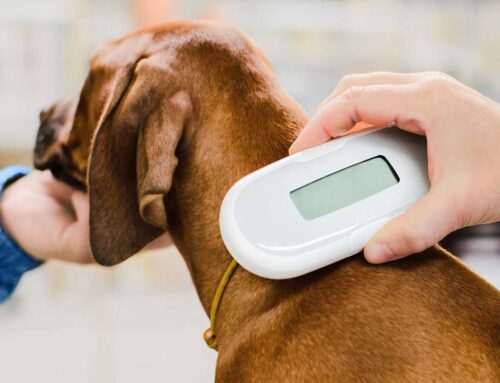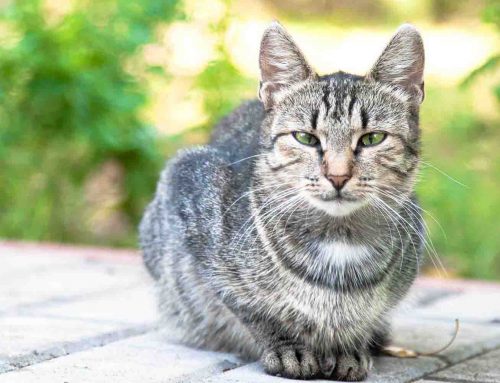Regular veterinary care is the best way to keep your cat healthy and happy. There are almost 4 million cats in Australia, but they are less likely to receive regular health checks than dogs. In 2016, approximately 80% of dogs were examined by a vet at least once, but this was the case for only 65% of cats. This disturbing trend is leading many veterinary professionals to ask pet owners, “Have we seen your cat lately?”
Many feline specialists recommend a minimum of one annual wellness examination for cats, with more frequent examinations for senior and geriatric patients, or those cats with medical or behavioural conditions.
Uncovering the lifestyle of Australian cats
Outdoor access increases the risk of exposure to infectious and parasitic diseases. A recently published study has revealed that more than half of cats described by their owners as ‘indoor only’ actually had some form of outdoor access.
Key insights from the study include:
- 69% of cats were described as indoor/outdoor, 34% as indoor only, and 3% as outdoor only.
- Further questioning revealed that 58% of cats described as indoor only actually had some form of past or present outdoor access.
- 39% of cat owners initially intended to keep their cat exclusively indoors but later changed their minds.
- In total, 83% of pet cats had some form of outdoor access during their lives.
What do the survey results tell us?
- The vast majority of Australian cats have outdoor access.
- Careful questioning of cat owners is required, as many owners describe their cats as indoor only, despite the cat having some level of outdoor access.
- Unplanned lifestyle changes mean that many indoor only kittens will end up having outdoor access later.
What do the results mean for Australian cats?
A cat’s lifestyle is important when assessing its risk of exposure to infectious and parasitic diseases (e.g. non-core pathogens that are spread by direct contact). Two of the most important of these are the retroviruses, feline immunodeficiency virus (FIV) and feline leukaemia virus (FeLV).
FIV is common throughout Australia; a recent study showed a seroprevalence of 15% (or greater than 1 in 7 cats) in pet cats with outdoor access*. The prevalence of FeLV is lower (estimated at 1-2%)*, but the consequences of a progressive infection are significant; mortality rates have been estimated at 50% within 2 years, and 80% within 3 years of infection^.
Given the results of this survey, vaccination against these pathogens should be considered for the majority of Australian cats. Speak to your vet about the risk vaccinating your cat from these diseases.
Important Cat facts
- Indoor cats are still at risk for a wide variety of diseases. Also, you can never be 100% certain your indoor cat won’t ever get outside, or the new cat you adopted is not harbouring a disease that can be transmitted to other cats. And while indoor cats may be exposed to fewer diseases than outdoor cats, indoor cats may be exposed to many disease pathogens. We recommend vaccinations and parasite control measures for all cats regardless of where they spend their time.Your veterinarian will determine the vaccinations your cats need based on factors such as age and lifestyle e.g. do they have any outdoor access. The important thing to remember is serious infectious feline diseases are still prevalent and if your cats are not vaccinated against them, they’re at risk.
- Did you know that cats instinctively hide illness? There’s a good chance you won’t know if your cat is sick, especially in the early stages of disease. Annual examinations may uncover an underlying illness or condition. Early diagnosis and treatment can improve the prognosis of many conditions and may prevent the development of more serious problems.
- Even cats with no outdoor exposure can still get sick and have health conditions that require attention including dental health, osteoarthritis, chronic kidney disease, weight management and even diabetes and cancer. Parasites such as fleas can also be passed on from other pets.
Behavioural Issues
- Question 1: My 15-year-old cat used to lick his hair and keep himself very neat and clean. Lately, I’ve found some mats on him, and he doesn’t seem to spend as much time taking care of himself. Should I be concerned?
- Answer: There are often changes in grooming behaviour as cats get older. It’s not uncommon for cats to put on a little weight as they age, and he may not be able to reach certain parts of his body. At his age, he may also have some arthritis limiting his mobility and making the grooming process painful. Any cat that stops grooming himself may be showing signs of illness and should have a veterinary examination.
- Question 2: My cat has always been great about using his litter tray, and he has never had an accident. Lately, however, he has started going outside the litter tray, not in it. Why is he doing this, and what can I do about it?
- Answer: An abrupt change in your cat’s litter tray behaviour suggests there’s something going on with your cat. It is important to keep the litter tray clean and to consider recent changes in location or type of litter used. There are several medical conditions associated with his change in behaviour, including lower urinary tract disease, kidney disease, urinary tract infection and diabetes mellitus. It could also be a sign of arthritis, which makes it difficult for him to get into the litter tray. Make an appointment with your veterinarian as soon as possible to uncover any medical conditions that could be affecting his toileting behaviour.
- Question 3: I recently got a new kitten from the shelter and my older cat is having trouble adjusting. He is hiding behind the couch, and bites and scratches me when I pick him up. Will this change eventually, and is there something I should do about it?
- Answer: It takes most cats a while to adjust to a new household pet. Some cats may be fearful and show it by becoming a bit aggressive, some hide out and some just ignore the whole thing. Overall, all cats are somewhat stressed at any change in their environment. The veterinary professionals at your clinic are skilled in helping you work through behaviour issues, just as they are experts in addressing medical problems. They can suggest some strategies that can keep everyone in the household happier.
*Westman, M.E., et al (2016) Seroprevalence of feline immunodeficiency virus and feline leukaemia virus in Australia: risk factors for infection and geographical influences (2011-2013). JFMS Open Rep, 2(1), 2055116916646388
^Hartmann, K. (2011) Clinical aspects of feline immunodeficiency and feline leukemia virus infection. Vet Immunol Immunopathol, 143(3-4), 190-201






